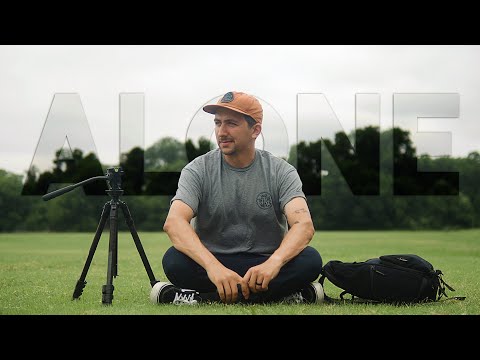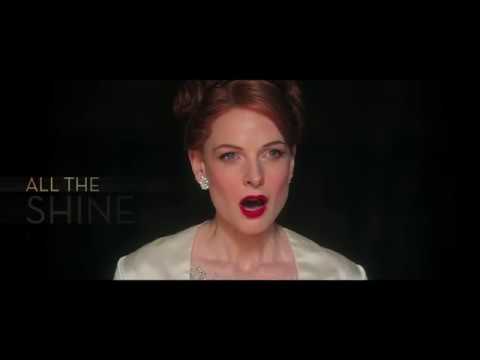Cinematographer Job: Description & Salary

Cinematographer Job Description Template
Cinematographers are professionals in the film and television industry who are responsible for capturing the visual elements of a production. They work closely with directors, production designers, and camera operators to create the desired look and feel of a film or TV show. The main duties of a cinematographer include choosing the appropriate camera and lenses, setting up lighting equipment, framing shots, and operating the camera during filming. They also collaborate with the director to determine the best angles and camera movements to enhance the storytelling. Cinematographers must have a strong understanding of lighting techniques, composition, and camera equipment. They need to be able to effectively communicate their vision to the rest of the production team and work under tight schedules and deadlines. Attention to detail and creativity are essential for cinematographers to capture visually stunning shots that contribute to the overall aesthetic of the production. Two important qualities for a cinematographer are technical proficiency and artistic vision. Technical proficiency involves having a deep knowledge of camera equipment, lighting techniques, and post-production processes. This allows cinematographers to execute their creative ideas effectively. Artistic vision, on the other hand, refers to the ability to visualize the desired look and feel of a scene and translate it into captivating visuals. Cinematographers need to have a keen eye for composition, color, and movement to create visually compelling images. Overall, cinematographers play a crucial role in the filmmaking process, as they are responsible for translating the director’s vision into a visual language that engages and captivates the audience.Cinematographer Responsibilities
Cinematographer Requirements
How Much Does A Cinematographer Make?
Cinematographer Salary
| Experience Level | Annual Salary |
|---|---|
| Entry Level | $40,000 – $60,000 |
| Mid-Career | $60,000 – $80,000 |
| Experienced | $80,000 – $120,000 |
| Senior | $120,000+ |
A cinematographer, also known as a director of photography, is responsible for the artistic and technical aspects of capturing images for films and television shows. Their role involves selecting the right camera, lenses, lighting, and composition to visually tell a story. The salary of a cinematographer can vary depending on their experience level. Entry-level cinematographers can earn an annual salary of around $40,000 to $60,000. As they gain more experience and expertise, their salary can increase to $60,000 to $80,000 for mid-career cinematographers. Experienced cinematographers with a solid portfolio can earn between $80,000 to $120,000 per year. Senior cinematographers who have established themselves in the industry can earn $120,000 or more annually. These salary ranges are estimates and can vary based on factors such as location, project budget, and individual negotiation skills.
Cinematographer Salaries by Country
Top Paying Countries for Cinematographers
| Country | Average Annual Salary (USD) |
|---|---|
| United States | $92,000 |
| Canada | $60,000 |
| Australia | $55,000 |
| United Kingdom | $50,000 |
| Germany | $46,000 |
A cinematographer is responsible for capturing the visual elements of a film or video production. They work closely with directors and producers to create the desired look and feel of a project. Salaries for cinematographers vary depending on the country they work in. The top paying countries for cinematographers include the United States, Canada, Australia, United Kingdom, and Germany.
In the United States, cinematographers earn an average annual salary of $92,000. In Canada, the average salary is $60,000, while in Australia it is $55,000. In the United Kingdom, cinematographers earn an average of $50,000 per year, and in Germany, the average salary is $46,000.
These countries offer lucrative opportunities for cinematographers, but it’s important to consider factors such as cost of living and industry demand when choosing a location to work in. Additionally, cinematographers may also earn additional income from freelance work or by working on higher-budget productions.
A video on the topic Cinematographer
Video Source : NigelBarrosInterview Questions for Cinematographer
1. What is your role as a cinematographer?
As a cinematographer, my role is to visually interpret the director’s vision and bring it to life through the use of camera and lighting techniques. I collaborate closely with the director and other members of the production team to determine the overall visual style and mood of the film or project.
2. What qualities do you believe are important for a cinematographer to possess?
A cinematographer should have a strong artistic and technical understanding of lighting, composition, color, and camera movement. Attention to detail, creativity, problem-solving skills, and the ability to work under pressure are also crucial. Additionally, effective communication and collaboration skills are important for working with the director and other crew members.
3. How do you approach establishing the visual style for a project?
When establishing the visual style for a project, I first have thorough discussions with the director to understand their vision, influences, and desired aesthetic. I study the script and conduct research to gather visual references that align with the project’s themes and tone. From there, I work with the director to develop a shot list, create storyboards, and conduct camera and lighting tests to solidify the visual style.
4. How do you ensure that the lighting and camera work enhance the storytelling?
I believe that lighting and camera work should always serve the story and enhance the desired emotions and narrative. To achieve this, I carefully consider the mood and tone of each scene, selecting appropriate lighting techniques and camera angles to support the storytelling. I also pay attention to the use of color, contrast, and movement to further enhance the narrative and character development.
5. Can you describe your approach to collaborating with directors and other crew members?
Collaboration is a vital aspect of cinematography. I work closely with the director to understand their vision and goals for the project. I actively listen to their ideas and provide my own input based on my expertise. I also collaborate with the production designer, gaffer, and other crew members to ensure that the visual elements are cohesive. Open communication, mutual respect, and a willingness to share ideas are key to successful collaboration.
6. How do you stay up-to-date with new camera and lighting technologies?
I believe it is crucial to stay up-to-date with the latest camera and lighting technologies in order to provide the best possible visual solutions for each project. I regularly attend industry events, workshops, and conferences to learn about new equipment and techniques. I also read industry publications and follow online resources to stay informed about advancements in camera and lighting technology.
7. Can you provide an example of a challenging situation you faced during a shoot and how you resolved it?
During a shoot, I encountered a situation where the location had limited natural light and the artificial lighting setup was not working as expected. To resolve this, I quickly assessed the available resources and improvised by using practical lights and reflectors to enhance the natural light. I also communicated with the director and gaffer to modify the shot composition and camera angles to make the most of the available lighting. Through teamwork and adaptability, we were able to overcome the challenge and achieve the desired visual result.
8. How do you approach working within budget constraints?
Working within budget constraints is a common challenge in film production. I approach it by carefully planning and prioritizing the essential equipment and resources needed to achieve the desired visual style. I also explore cost-effective alternatives and work closely with the production team to make efficient use of available resources. Flexibility and creative problem-solving are key in adapting to budget limitations without compromising the overall visual quality.
9. Can you discuss a project where you had to work in a specific genre or style?
I recently worked on a film project that required a film noir visual style. To achieve this, I extensively studied classic film noir cinematography, paying attention to lighting techniques, camera angles, and composition. I incorporated high contrast lighting, deep shadows, and low-key lighting setups to create the desired atmospheric and dramatic effect. Collaborating closely with the production designer, we also ensured that the set design and props aligned with the film noir aesthetic.
10. What advice would you give to someone aspiring to become a cinematographer?
I would advise aspiring cinematographers to study the art of cinematography extensively, both through formal education and practical experience. It is important to learn the technical aspects of camera and lighting equipment, but also to develop a deep understanding of visual storytelling and film language. Networking and building relationships within the industry are crucial, as it can lead to opportunities for collaboration and learning from experienced professionals. Lastly, always be curious, open-minded, and passionate about your craft.






